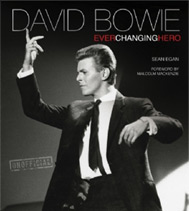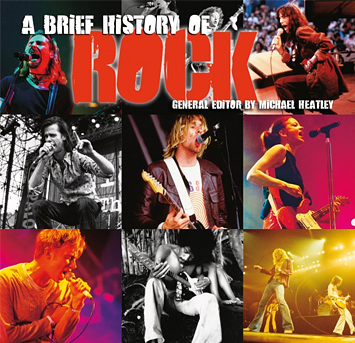The music of Latin America combines influences from the traditional music of the African slaves transported between 1450 and the end of the nineteenth century, music from the Spanish and Portuguese colonial powers, and latterly, pop and jazz from North America. Samba is an umbrella term describing an energetic style of dancing and drumming performed at the annual ...
Latin America is particularly rich and varied in its musical traditions, with each country boasting a broad and very distinct collection of genres whose development has been shaped by indigenous rhythms, migration patterns from Europe and the influx of slavery. At the uppermost tip of Latin America is Mexico, a country whose musical sub-genres are too many to ...
Latin jazz is commonly defined as the fusion of American jazz melodies, improvisation and chords with Latin American rhythms, predominantly those of Afro-Cuban origin. How this marriage of styles occurred is also one of the most significant cultural musical exchanges in history. Mention the birth of Latin jazz to any aficionado of the art form and they will invariably reply ...
Latin pop has been around for as long as Latin music itself. As far back as the 1920s, Mexico, Argentina and Spain were veritable fountains of popular music, which they exported to all Spanish-speaking nations. An international audience was found in the United States, along with the steady influx of Latino immigrants in the late twentieth century. ...
Buoyed by its unprecedented international exposure in the 1990s, Latin pop greeted the new century with the first-ever Latin Grammy awards, which took place in the United States in September 2000. Conceived as an internationally minded award, clearly distinct from – although related to – the Grammys, one of the objectives of the Latin Grammys was to ...
, and soon after 1835 bass tubas started being manufactured in Germany. Essentially a keyed bugle by descent, the bass tuba (confusingly, the name tuba comes from the Latin word for trumpet) has a very wide conical bore and as a result requires a good deal of puff. Although the modern instrument is oval with a vertical-facing bell, ...
cm/20–24 in long), is a single-headed Latin-American barrel drum used throughout South America, and in pop and jazz fusion music. The conga is the largest hand drum used in Latin America, and may be descended from Congolese makuta drums. In modern congas and bongos, the body is made from wooden staves glued and clamped together, or it ...
of the world have their origins in the Ottoman Empire. The English name ‘shawm’ – that of a Renaissance instrument developed from the oriental form – could derive from the Latin calamus, meaning a reed or stalk, or (perhaps more likely since shawms seem to have arrived in Western Europe during the Crusades) from an old Arabic name for ...
and the head at the same time, and using brushes or rattan sticks. The bell of the cymbal can be used to imitate a cowbell. In progressive rock, Latin and jazz styles, the drummer often plays more complex rhythms between the bass drum and snare drum. Solos and Fills Short drum fills and longer solos are added to ...
A frame drum is a skin stretched over and nailed to a shallow square or circular frame. It is played with sticks or with the hands. Frame drums are common to many musical cultures, and the modern tambourine and bodhrán are essentially the same instruments that were being played in Arabia and India in pre-Islamic times. They are often played ...
Friction drums are folk instruments of pre-industrialized Central Europe, Africa and Latin America. They are often associated with spiritual music because of their unusual sound. Construction A friction drum comprises a vessel covered in a membrane which is made to vibrate by means of a stick or string rubbed against or pushed through it. In the Brazilian cuíca, the ...
Understanding how to use friction to produce sounds in glass goes back to Galileo Galilei (1564–1642), who discussed the singing effect achieved by running a moistened finger around the rim of a glass. In 1743, the Irish musician Richard Puckeridge created an angelic organ, or seraphim, from glasses rubbed with wet fingers. The glasses were filled with water ...
for the same purposes. Nevertheless, the guitar’s strong association with Spain began at this time, and the Spanish passion for the vihuela was responsible for its introduction to Latin America during the colonization of that part of the world. Baroque Guitar The guitars of sixteenth-century Europe were considerably smaller than the modern instrument. Initially they had four courses tuned ...
version of the dulcimer used for orchestral purposes. Clavichord The clavichord affirms its place as the earliest of the string keyboard instruments in its very name, taken from the Latin for, simply, key and string. Chronologically older than the virginal and spinet – it is first mentioned in the 1400s – the clavichord differs from both since its ...
as hard sticks will damage the bars. The instrument originated in Africa, where it used calabashes as resonators. Possibly because of the transatlantic slave trade, the marimba reached Latin America, where it acquired enormous popularity. Marimbas began to be manufactured in the US in 1910. These instruments used stopped metal tubes of graduated lengths as resonators. Initially joining ...
AUTHORITATIVE
An extensive music information resource, bringing together the talents and expertise of a wide range of editors and musicologists, including Stanley Sadie, Charles Wilson, Paul Du Noyer, Tony Byworth, Bob Allen, Howard Mandel, Cliff Douse, William Schafer, John Wilson...
CURATED
Classical, Rock, Blues, Jazz, Country and more. Flame Tree has been making encyclopaedias and guides about music for over 20 years. Now Flame Tree Pro brings together a huge canon of carefully curated information on genres, styles, artists and instruments. It's a perfect tool for study, and entertaining too, a great companion to our music books.

David Bowie
Fantastic new, unofficial biography covers
his life, music, art and movies, with a
sweep of incredible photographs.


